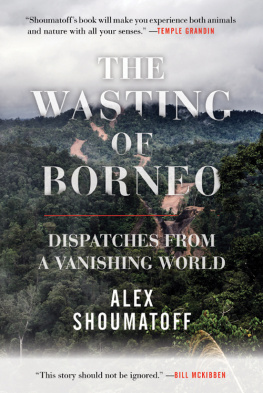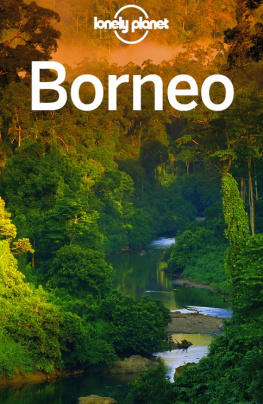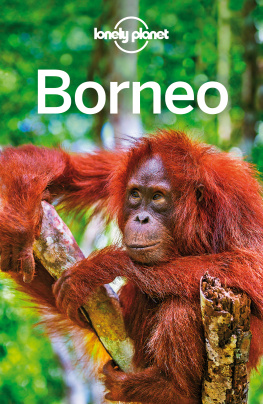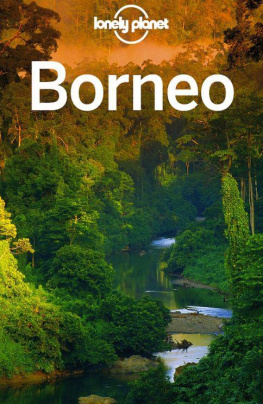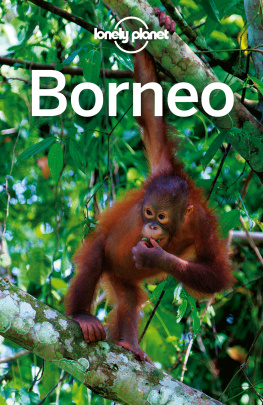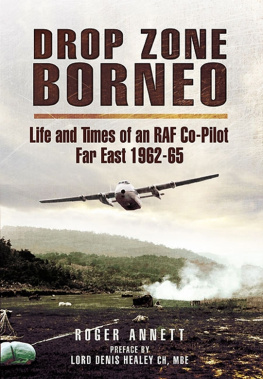Treacher - British Borneo
Here you can read online Treacher - British Borneo full text of the book (entire story) in english for free. Download pdf and epub, get meaning, cover and reviews about this ebook. year: 2012, publisher: Bod Third Party Titles, genre: Romance novel. Description of the work, (preface) as well as reviews are available. Best literature library LitArk.com created for fans of good reading and offers a wide selection of genres:
Romance novel
Science fiction
Adventure
Detective
Science
History
Home and family
Prose
Art
Politics
Computer
Non-fiction
Religion
Business
Children
Humor
Choose a favorite category and find really read worthwhile books. Enjoy immersion in the world of imagination, feel the emotions of the characters or learn something new for yourself, make an fascinating discovery.

- Book:British Borneo
- Author:
- Publisher:Bod Third Party Titles
- Genre:
- Year:2012
- Rating:3 / 5
- Favourites:Add to favourites
- Your mark:
- 60
- 1
- 2
- 3
- 4
- 5
British Borneo: summary, description and annotation
We offer to read an annotation, description, summary or preface (depends on what the author of the book "British Borneo" wrote himself). If you haven't found the necessary information about the book — write in the comments, we will try to find it.
British Borneo — read online for free the complete book (whole text) full work
Below is the text of the book, divided by pages. System saving the place of the last page read, allows you to conveniently read the book "British Borneo" online for free, without having to search again every time where you left off. Put a bookmark, and you can go to the page where you finished reading at any time.
Font size:
Interval:
Bookmark:

| Note: | Images of the original pages are available through Internet Archive. See http://www.archive.org/details/yonderyo00gavarich |
SKETCHES OF
BRUNAI, SARAWAK, LABUAN,
AND
NORTH BORNEO.
W. H. TREACHER, C.M.G., M.A. Oxon. ,
Secretary to the Government of Perak,
Formerly Administrator of Labuan and H.B.M. Acting Consul-General in Borneo,
First Governor of British North Borneo.
of the Royal Asiatic Society.
PRINTED AT THE GOVERNMENT PRINTING
DEPARTMENT.
1891.
| CHAPTER I. Pages . |
| The Hudson's Bay Company's Charter, 1670. British North Borneo Company's Charter, November 1881, as a territorial power. The example followed by Germany. Borneo the second largest island in the world. Visited by Friar Odoric, 1322, by Berthema, 1503; but not generally known until, in 1518 Portuguese, and in 1521 Spanish, expeditions touched there. Report of Pigafetta, the companion of Magellan, who found there a Chinese trading community. Origin of the name Borneo; sometimes known as Kalamantan. Spanish attack on Brunai, 1573. First Dutch connection, 1600; first British connection, 1609. Diamonds. Factory established by East India Company at Banjermassin, 1702, expelled by natives. British capture of Manila, 1762, and acquisition of Balambangan, followed by cession of Northern Borneo and part of Palawan. Spanish claims to Borneo abandoned by Protocol, 1885. Factory established at Balambangan, 1771, expelled by Sulus, 1775; re-opened 1803 and abandoned the following year. Temporary factory at Brunai. Pepper trade. Settlement of Singapore, 1819. Attracted trade of Borneo, Celebes, &c. Pirates. Brooke acquired Sarawak 1840, the first permanent British possession. Labuan a British Colony, 1846. The Dutch protest. Their possessions in Borneo. Spanish claims. Concessions of territory acquired by Mr. Dent, 1877-78. The monopolies of the first Europeans ruined trade: better prospect now opening. United States connection with Borneo. Population. Malays, their Mongolian origin. Traces of a Caucasic race, termed Indonesians. Buludupih legend. Names of aboriginal tribes. Pagans and Mahomedans. |
| CHAPTER II. Pages . |
| Description of Brunai, the capital, and its river. Not a typical Malayan river. Spanish Catholic Mission. British Consulate. Inche Mahomed. Moses and a former American Consulate. Pigafetta's estimate of population in 1521, 150,000. Present estimate, 12,000. Decay of Brunai since British connection. Life of a Brunai noble; of the children; of the women. Modes of acquiring slaves: 'forced trade.' Condition of slaves. Character and customs of Brunai Malays. Their religion, gambling, cock-fighting: amoks, marriage. Sultan and ministers and officers of the state. How paid. Feudal rightsKa-rjahan, Kouripan, Pusaka. Ownership of land. Modes of taxation. Laws. Hajis. Punishments. Executions. A naval officer's mistake. No army, navy, or police, but the people universally armed. Cannon foundries. Brass guns as currency. Dollars and copper coinage. Taxation. Revenue; tribute from Sarawak and North Borneo; coal resources. |
| CHAPTER III. Pages . |
| Pigafetta's description of Brunai in 1521. Elephants. Reception by the King. Use of spirituous liquors. Population. Floating Market. Spoons. Ladies appearing in public. Obeisance. Modes of addressing nobles. The use of yellow confined to the Royal Family. Umbrellas closed when passing the Palace. Nobles only can sit in the stern of a boat. Ceremonies at a Royal reception; bees-wax candles. |
| Mr. Dalrymple's description of Brunai in 1884. Quakers' meeting. Way to a Malay's heart lies through his pocket. Market place and hideous women. Beauties of the Harems. Present population. Cholera. Exports. Former Chinese pepper plantations. Good water supply. Nobles corrupt; lower classes not. The late Sultan Mumim. The present Sultan. Kampongs, or parishes and guilds. Methods of fishing: Klongs; Rambat; peculiar mode of prawn-catching; Serambau; Pukat; hook and line; tuba fishing. Sago. Tobacco; its growth and use. Areca-nut; its use and effects. Costumes of men and women. Jewellery. Weapons. The kris; parang; bliong; parang lang. The Kayans imitated by the Dyaks in a curious personal adornment. Canoes: dug-outs; pakerangan; prahus; tongkangs; steering gear; similarity to ancient Vikings' boat; boat races. Paddling. The Brunais teetotallers and temperate. Business and political negotiations transacted through agents. Time no object. The place of signatures taken by seals or chops. The great seal of state. Brunais styled by the aborigines, Orang Abai. By religion Mahomedans, but Pagan superstitions cling to them; instances. Traces of Javanese and Hindu influences. A native chronicle of Brunai; Mahomedanism established about 1478; connection of Chinese with Borneo; explanation of the name Kina-balu applied to the highest mountain in the island. Pepper planting by Chinese in former years. Mention of Brunai in Chinese history. Tradition of an expedition by Kublai Khan. The Chinese driven away by misgovernment. Their descendants in the Bundu district. Other traces of Chinese intercourse with Borneo. Their value as immigrants. European expeditions against Brunai. How Rajah Brooke acquired Sarawak amidst the roar of cannon. Brooke's heroic disinterestedness. His appointment as British confidential agent in Borneo. The episode of the murder of Rajah Muda Hassim and his followers. Brunai attacked by Admiral Sir Thomas Cochrane. Captain Rodney Mundy follows the Sultan into the jungle. The batteries razed and peace proclaimed. |
| CHAPTER IV. Pages . |
| Sarawak under the Brooke dynasty. By incorporation of other rivers extends over 40,000 square miles, coast line 380 miles, population 280,000. Limbang annexed by Sarawak. Further extension impossible. The Trusan river; 'trowser wearers'; acquired by Sarawak. The Limbang, the rice pot of Brunai. The Cross flown in the Muhamadan capital by pagan savages. A launch decorated with skulls. Dyak militia, the Sarawak 'Rangers,' and native police force. Peace of Sarawak kept by the people. Cheap government. Absolute Monarchy. Nominated Councils. The 'Civil Service,' 'Residents.' Law, custom, equity and common sense. Slavery abolished. Sources of revenue'Opium Farm' monopoly, poll tax, customs, excise, fines and fees. Revenue and expenditure. Early financial straits. Sarawak offered to England, France and Holland. The Borneo Company (Ltd.). Public debt. Advantages of Chinese immigration 'Without the Chinese we can do nothing.' Java an exception. Chinese are good traders, agriculturists, miners, artizans, &c.: sober and law-abiding. Chinese secret societies and faction fights; death penalty for membership. Insurrection of Chinese, 1857. Chinese pepper and gambier planters. Exportssago and jungle produce. Mineralsantimony, cinnabar, coal. Tradeagriculture. Description of the capitalKuching. Sir Henry Keppel and Sir James Brooke. Piracy. 'Head money.' Charges against Sir J. Brooke. Recognition of Sarawak by United States and England. British protectorate. Death of Sir J. Brooke. Protestant and Roman Catholic Missions. Bishops MacDougal and Hose. Father Jackson. Mahomedans' conversion not attempted. |
| CHAPTER V. Pages . |
| Incident of the Limbang rebellion against Sultan of Brunai. Oppression of the nobles. Irregular taxationChukei basoh batis, bongkar sauh, tulongan, chop bibas, &c. The orang kayas. Repulse of the Tummonggong. Brunai threatened. Intervention of the writer as acting Consul General. Datu Klassi. Meeting broken up on news of attack by Muruts. Sultan's firman eventually accepted. Demonstration by H.M.S. |
Font size:
Interval:
Bookmark:
Similar books «British Borneo»
Look at similar books to British Borneo. We have selected literature similar in name and meaning in the hope of providing readers with more options to find new, interesting, not yet read works.
Discussion, reviews of the book British Borneo and just readers' own opinions. Leave your comments, write what you think about the work, its meaning or the main characters. Specify what exactly you liked and what you didn't like, and why you think so.

